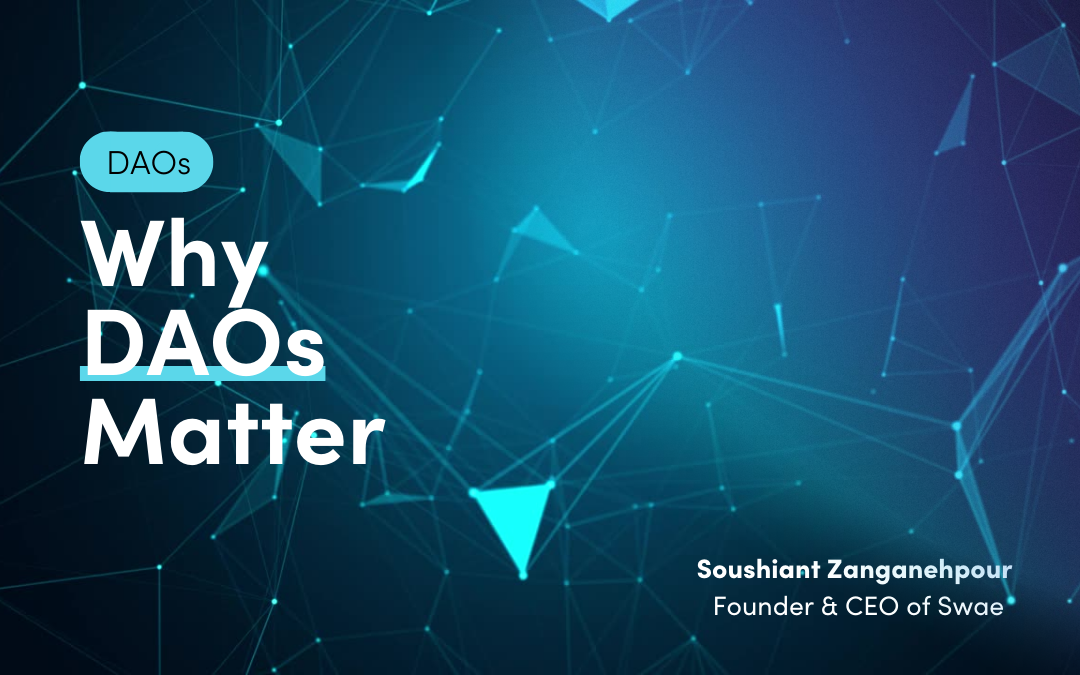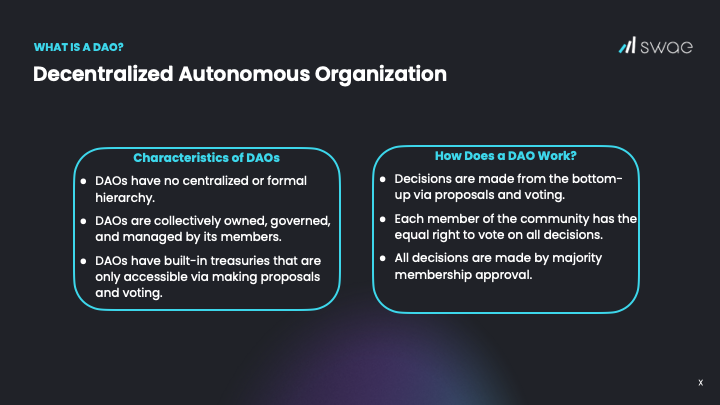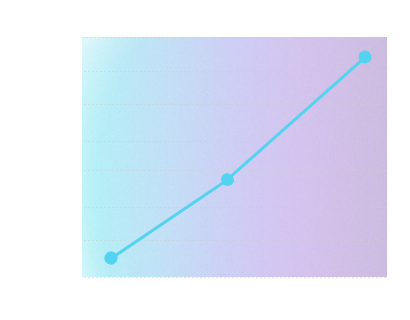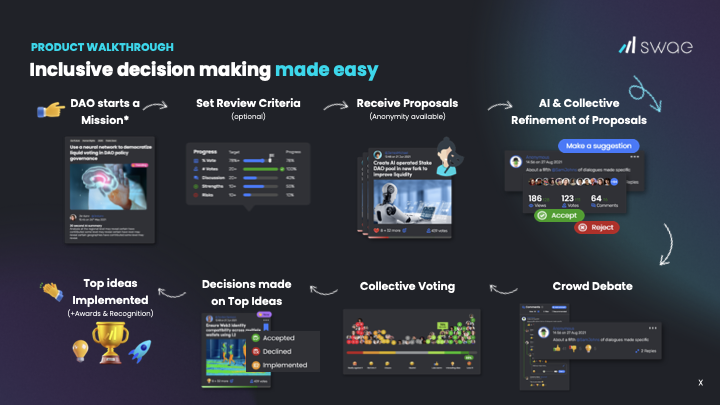The $1Million Drop Talking all things DAO, Decentralization and Grant Funding on Swae25 Oct 2022 1 min ReadJoin Swae Founder @Soushiant on Twitter Spaces Twitter Spaces twitter.com/i/spaces/1zqKVPZBpVaJB with Jan Horlings, VP of Product at SingularityNET, to discuss...

Swae Sessions | Can Democracy Save the Environment?
Can Democracy Save the Environment
[A Talk to the Council of Europe & World Forum for Democracy]
During this free webinar, you will learn:
Last year, The Council of Europe brought together CEOs, researchers and policy experts to analyse dimensions of the relationship between global environmental challenges, technology and democracy.
The unprecedented global ecological challenges posed by climate change and biodiversity loss, among others, raise a range of compelling questions about the intersections between these challenges, the uses and application of current and emerging technology, and the ability of democracies around the world to react effectively to these crises.
On the one hand, current and emerging technology present exciting new solutions to enable better collective responses to the climate and related ecological challenges. More, tailored software, using AI technology, may be used to engage citizens and enhance democratic decision-making around the world in connection with the global climate and ecological challenges, as some governments strive to ensure maximal citizen engagement in and commitment to the significant economic and social changes that may be necessary for sufficient climate/environmental action.
Soushiant Zanganehpour, Founder and CEO of Swae was invited to present his observations on the subject of “Can Democracy Save the Environment?”
Time to go
Day(s)
:
Hour(s)
:
Minute(s)
:
Second(s)
Save the Date & Register
August
4
Thursday 4th August
Join us Live!
Live on Crowdcast and On Demand





















![Swae-Blockchain_Futurist_Conference_WEB3_DAO Swae_Harvard_Business_review_How to Be Seen as a Brilliant and Bold Leader [Become a Great Communicator].png](https://swae.io/wp-content/uploads/Swae-Blockchain_Futurist_Conference_WEB3_DAO.png)
![Group 11527 Swae_Harvard_Business_review_How to Be Seen as a Brilliant and Bold Leader [Become a Great Communicator].png](https://swae.io/wp-content/uploads/Group-11527.png)
![How to be seen as a Brilliant and Bold Leader [Become a great Communicator]](https://swae.io/wp-content/uploads/Resources_Swae_Harvard_Business_review_How-to-Be-Seen-as-a-Brilliant-and-Bold-Leader-Become-a-Great-Communicator-400x250.png)
![Creating a Speak Up Culture and Maximizing Engagement [Swae’s 5-Step Organizational Readiness Checklist]](https://swae.io/wp-content/uploads/Swae_Creating-a-Speak-Up-Culture-1080x675.jpg)








![Tips on how to make Remote Work work for you [It’s here to stay]](https://swae.io/wp-content/uploads/Resources_Swae_Harvard_Business_review_how-to-make-remote-work-work-for-you-its-here-to-stay-400x250.png)
![Approaches to Solving Problems in the Workplace [Harvard Business Review Recap]](https://swae.io/wp-content/uploads/Resources_Swae_Harvard_Business_review_Approaches-to-Solving-Problems-in-the-Workplace-400x250.png)
![Supercharge Your Innovation Process [A Playbook for Transformation Through Innovation]](https://swae.io/wp-content/uploads/Swae_Resources_MIT_Sloan_Review_Supercharge-Your-Innovation-Process-A-Playbook-for-Transformation-Through-Innovation-400x250.png)
![Does your company’s culture empower people to speak up? [Brief Survey]](https://swae.io/wp-content/uploads/Swae_for-employee-engagement.png)
![Business Conflicts. Two Female Employees Arguing During Corporate Meeting In Office Swae_Harvard_Business_review_How to Be Seen as a Brilliant and Bold Leader [Become a Great Communicator].png](https://swae.io/wp-content/uploads/Swae_Employee_Engagement_Survey.jpg)

![High Performers in Companies Around the Globe Use Swae [Here Are 3 Reasons Why]](https://swae.io/wp-content/uploads/High-Performers-in-Companies-Around-the-Globe-Use-Swae-Here-Are-3-Reasons-Why-1080x675.png)
![Young businessman working on his laptop in spacious bright office. Swae_Harvard_Business_review_How to Be Seen as a Brilliant and Bold Leader [Become a Great Communicator].png](https://swae.io/wp-content/uploads/swae-high-performers-use-swae.jpg)
![Swae-team Swae_Harvard_Business_review_How to Be Seen as a Brilliant and Bold Leader [Become a Great Communicator].png](https://swae.io/wp-content/uploads/Swae-team.png)
![Swae_Harvard_Business_review_How to Be Seen as a Brilliant and Bold Leader [Become a Great Communicator].png Swae_Harvard_Business_review_How to Be Seen as a Brilliant and Bold Leader [Become a Great Communicator].png](https://swae.io/wp-content/uploads/african-american-businessman-boss-with-group-of-bu-2021-09-01-21-09-40-utc.png)
![Kaspersky_Bottom-up Innovation in Enterprise_Swae Swae_Harvard_Business_review_How to Be Seen as a Brilliant and Bold Leader [Become a Great Communicator].png](https://swae.io/wp-content/uploads/Kaspersky_Bottom-up-Innovation-in-Enterprise_Swae.png)


![Swae_Resources_MIT_Sloan_Review_Diversity, Equity and Inclusion Initiatives Need Action, Not Lip Service_plain Swae_Harvard_Business_review_How to Be Seen as a Brilliant and Bold Leader [Become a Great Communicator].png](https://swae.io/wp-content/uploads/Swae_Resources_MIT_Sloan_Review_Diversity-Equity-and-Inclusion-Initiatives-Need-Action-Not-Lip-Service_plain.png)
![Man speaking in a seminar Swae_Harvard_Business_review_How to Be Seen as a Brilliant and Bold Leader [Become a Great Communicator].png](https://swae.io/wp-content/uploads/swae-speak-up-culture-employee-engagement-companies-win-1024x765.jpg)





